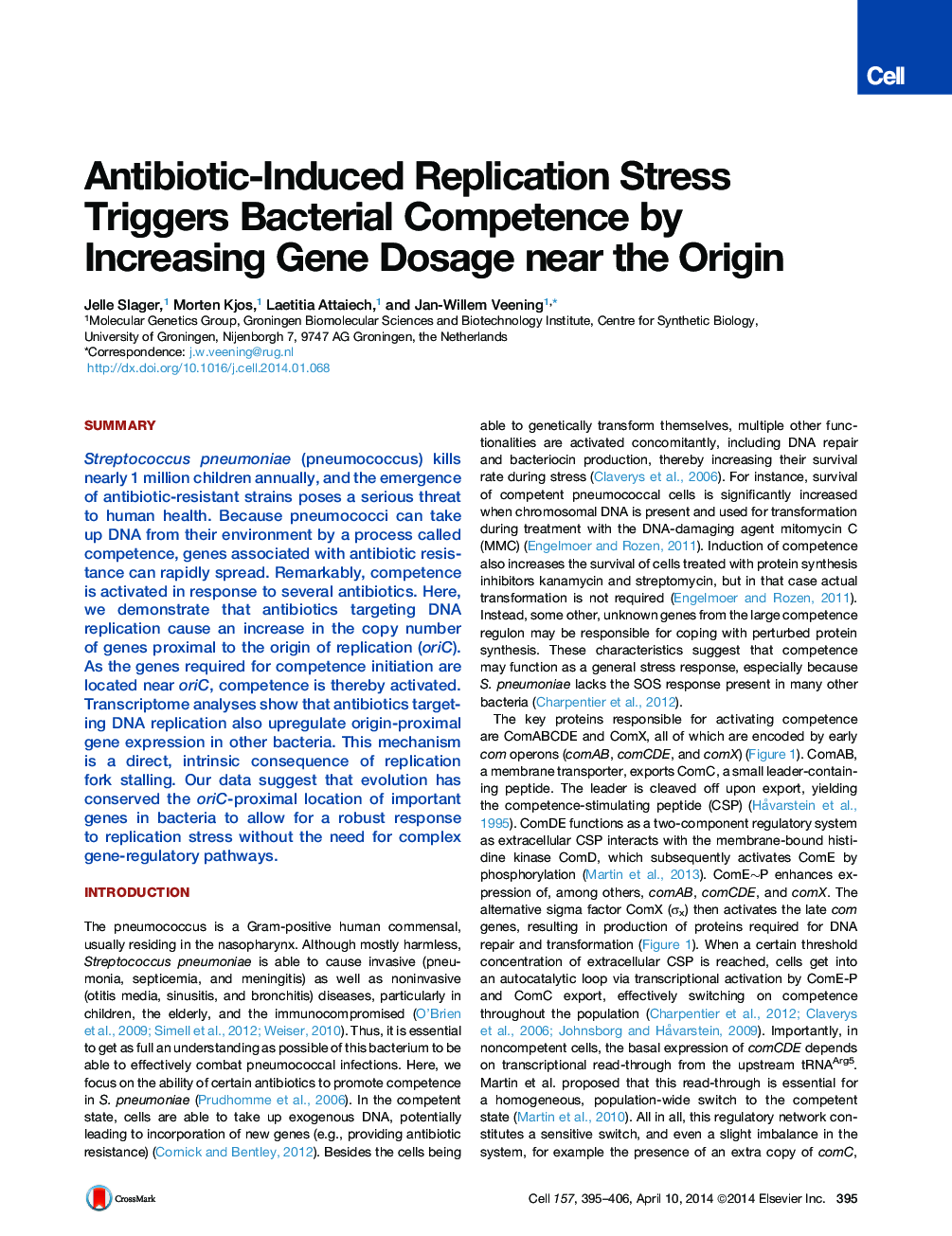| Article ID | Journal | Published Year | Pages | File Type |
|---|---|---|---|---|
| 2035320 | Cell | 2014 | 12 Pages |
•Antibiotics like ciprofloxacin and HU stall bacterial DNA replication elongation•Replication initiation continues, increasing gene dosage near the replication origin•oriC proximity of pneumococcal com genes accounts for antibiotic-induced competence•Gene-dosage shifts explain many transcriptional responses to antibiotics in bacteria
SummaryStreptococcus pneumoniae (pneumococcus) kills nearly 1 million children annually, and the emergence of antibiotic-resistant strains poses a serious threat to human health. Because pneumococci can take up DNA from their environment by a process called competence, genes associated with antibiotic resistance can rapidly spread. Remarkably, competence is activated in response to several antibiotics. Here, we demonstrate that antibiotics targeting DNA replication cause an increase in the copy number of genes proximal to the origin of replication (oriC). As the genes required for competence initiation are located near oriC, competence is thereby activated. Transcriptome analyses show that antibiotics targeting DNA replication also upregulate origin-proximal gene expression in other bacteria. This mechanism is a direct, intrinsic consequence of replication fork stalling. Our data suggest that evolution has conserved the oriC-proximal location of important genes in bacteria to allow for a robust response to replication stress without the need for complex gene-regulatory pathways.PaperClip To listen to this audio, enable JavaScript on your browser. However, you can download and play the audio by clicking on the icon belowHelp with MP3 filesOptionsDownload audio (2902 K)
Graphical AbstractFigure optionsDownload full-size imageDownload high-quality image (315 K)Download as PowerPoint slide
